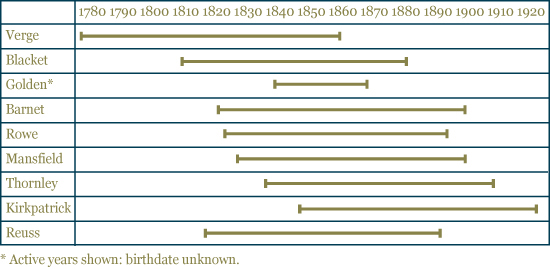Self-guided walks in Glebe NSW 2037 Australia
Explore the many facets of our fascinating and historic suburb of Glebe with this set of self-guided walks. A great guide for visitors, and new insights for residents
Early Glebe Architects
This walk focuses on a number of architects whose work has contributed to Glebe’s heritage streetscapes. Their lives are also enmeshed in local history but many have had a significant impact on wider Sydney, if not the State or even further afield. What is less certain was their formal qualifications…
More Information
- Apperly, Richard et al; A Pictorial Guide to Identifying Australian Architecture; A&R(1998)
- Fitzgerald, Shirley; Sydney 1842-1992; Hale & Iremonger (1992)
- Foster, Michael and Solling, Max; A Semi-Rural Retreat: Places, People and Society in Glebe 1828-1861, Part I; Leichhardt Historical Journal 23 (2002)
- Dupain, Max; Georgian Architecture in Australia, Ure Smith Sydney (1963)
- Herman, Morton; The Architecture of Victorian Sydney; Angus & Robertson (1964)
- Historic Glebe; Glebe Society Inc (1998)
- Jahn, Graham; Sydney Architecture; Watermark Press (1997)
- Johnson, Chris; Shaping Sydney: Public Architecture and Civic Decorum; Hale & Iremonger (1999)
- MacDonnell, Freda; The Glebe: Portraits and Places; Ure Smith (1975)
- Smith, Bernard and Kate; The Architectural Character of Glebe; Sydney University Press (1989)
- Solling, Max; Grandeur & Grit: a history of Glebe; Halstead Press (2007)
- Glebe Society web site: 'Architects'
Population growth
The period between 1840 and 1890 saw Australia transform itself, in a single generation, from a minor outpost of the British Empire into a major element of the British economy. Apperly, Irving & Reynolds note that this was brought about mainly though increased production of our pastoral and agricultural industries and by the discovery of gold in the eastern states. The resulting massive urban expansion necessitated the introduction of some building standards. Foster and Solling note that the 1841 census reveals there were 203 people living in Glebe; by 1902 there were over 19,000.
The start of building regulations
In 1837, the Building Act sought to impose some standards on building construction in Sydney (such as outlawing timber construction in the central town area to prevent the spread of fire). Nevertheless, the pace of population growth meant that developers in their haste often put up substandard dwellings. Fitzgerald notes that away from the main streets, buildings quickly became less substantial. Sanitary arrangements were often woefully inadequate and unhappily it was not uncommon for existing, jerry-built houses to fall down.
Early architects and their ‘training’
Most of those who styled themselves as architects were trained as surveyors, engineers or builders, gaining their architectural knowledge through practical experience, rather than through rigorous theoretical study. Speculative builders could arm themselves with J Fergusson’s Illustrated Handbook of Architecture or some pattern books and upgrade their status. An architect of the time, John Davey, complained that the profession was degraded by ‘mechanics, engineers, pirates and burglars’.
Architects formed their own professional body, the Institute of Architecture, in 1871; the first undergraduate course in architecture was offered by the University of Sydney in 1919; and the first Architects’ Registration Act was passed by the State Government in 1921. George Mansfield, some of whose work you will see on this walk, became the first President of the Institute of Architecture NSW (1871-76).
Glebe was once known as “the architects’ suburb” because a number of prominent architects found it an attractive and profitable residential address. A number worked largely in the area, some as speculative developers; others undertook work much further afield but nevertheless left their mark on Glebe.
This walk looks at two churches, some early houses as well as a number of Victorian villas; these houses encompass a number of architectural styles which have been defined by Smith in The Architectural Character of Glebe.
Glebe Housing Styles
Due to Australia’s remoteness, the quaint British tradition of naming building styles by the name of the ruling monarch went rather astray in the antipodes and styles lingered well after the demise of the distant royal. The specialities of architects and the tastes of commissioning owners also meant there was considerable overlap in styles, with one author identifying, inter alia, Old Colonial Georgian, Victorian Georgian, Old Colonial Regency, Victorian Regency, etc.
Throughout the walk you will find links to information on each of the main architectural styles found in Glebe.
Early Glebe Architects: Timescale


